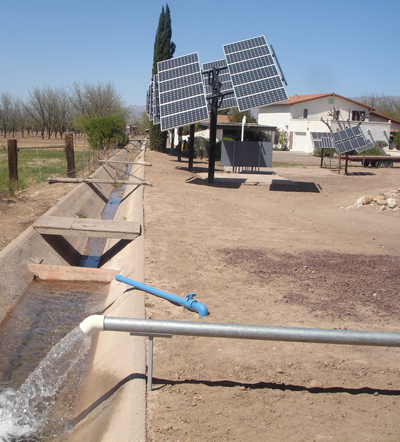
Solar Water Pump Testing Site in Safford, AZ/SunPumps
Tech aficionados will be queuing up this holiday season to score the latest, hottest gadget ever invented. That’s become the standard during these glory years of the plugged-in generation. And while communication is now possible across a broader geographic and social range than might ever have been imagined, it’s remarkable in this time of hyper-connectivity that nearly 1.5 billion people around the world, approximately 20% of the global population, are still living in the dark. Not only do these people lack the ability to charge a cellular phone or connect to the Internet, they’re without basic lighting and the economic opportunities that come with it. Raising the living standard in the world’s poorest communities will not take electrical power alone, but the expansion of access is seen as a key element in realizing the UN’s Millennium Development Goals and finally bringing everyone into the 21st Century.
The challenges are significant, but there’s an important role to be played by sustainable energy resources in addressing the problem. The topic of how renewables can alleviate energy poverty is sure to be among those discussed when the Alliance for Rural Electrification and its partners gather in Accra next week for the first International Off-Grid Renewable Energy Conference.




 Facebook
Facebook Permalink
Permalink Digg
Digg Reddit
Reddit LinkedIn
LinkedIn StumbleUpon
StumbleUpon Tumblr
Tumblr

